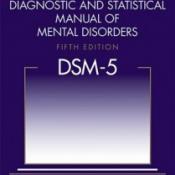I received a message about nonpathological-based therapy from an anonymous mental health professional. He contributed the following commentary:
“Without saying so explicitly, you are implicitly judging psychopathology as an indicator of some pervasive ‘badness’ that is incompatible with the goodness of a human being. The trouble doesn’t lie with psychotherapists who recognize psychopathology, but with therapists who judge psychopathology as bad. It is no solution to blind yourself to 100 years of literature on psychopathology and it is no solution to blind yourself to the ‘whole’ human being, pathology included, who is sitting right before you. The solution is to face up to the covert declaration that you’ve made regarding psychopathology, namely, that allowing yourself to see patients’ pathology would make them bad in your eyes.”
Here’s my response to the anonymous mental health professional:
“Dear Anonymous,
First of all, I want to thank you for taking the time to share your concerns with me. I greatly appreciate your care and thoughtfulness, and your remarks help me to communicate better about what it means to work nonpathologically. Your first sentence suggests that I am judging psychopathology as some pervasive badness, but I respectively disagree. Here’s why: S— happens in life, and no one gets through unscathed. Protecting ourselves with depression, phobias, addictions, or any other defense comes with the territory of being human. We are all vulnerable, we all suffer, and we all develop strategies for psychological survival. So, in my view,’pathology’ is adaptive.
It’s my experience that parts/strategies/ego states/defenses/pathos are truly benign at the heart of it, not malignant. A quick example of this is how a person with the high-profile, 80-hour-a-week job who endlessly strives to be the best, to be the most successful, may really be attempting to cover and compensate for childhood feelings of worthlessness. The striving part of such a person is a ‘good’ part, in that it’s trying to help. The person couldn’t have coped with his worthless feelings without it. Yes, the striving is destructive to the person and his or her family, but it’s all he or she has known how to do. This is one example of thousands.
I describe my approach as nonpathologizing because it sees the good intention behind what is labeled as pathology. So, I don’t think I’m blind to pathology or view pathology as bad, though I may disagree with you about the origin of pathology and the potential for healing pathology.
Furthermore, recognizing ‘pathology’ in another human being does not make one bad in my eyes, as you write. In fact, it’s just the opposite. Seeing protective parts, defenses, and wounds within people opens my heart and evokes compassion. The only hope people have of healing is developing understanding, compassion, and acceptance for their defenses and wounds. If a therapist can’t open their heart to a person’s defenses and wounds, it becomes less likely that the person will be able to open their heart to themselves.”
Is there anything you would add in response? Please comment and let us know.
© Copyright 2007 by Noah Rubinstein. All Rights Reserved. Permission to publish granted to GoodTherapy.org.
The preceding article was solely written by the author named above. Any views and opinions expressed are not necessarily shared by GoodTherapy.org. Questions or concerns about the preceding article can be directed to the author or posted as a comment below.

 The Dirtiest Word in the DSM
The Dirtiest Word in the DSM Myth Madness: 'The Therapist Will Interrogate, Blame, and Shame Me'
Myth Madness: 'The Therapist Will Interrogate, Blame, and Shame Me' Myth Madness: 'Therapy Is Endless and Will Cost a Fortune'
Myth Madness: 'Therapy Is Endless and Will Cost a Fortune'